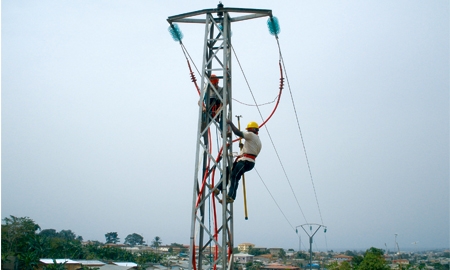The electricity sector in Equatorial Guinea paints a mixed picture. On one hand, capacity and production surpass consumption – meaning there is no lack of power. On the other hand, outdated equipment and illegal connections pose challenges in distribution, causing the electricity supply in some areas of the country to remain patchy.
The government is hard at work to eliminate blackouts and through the 70 per cent state-owned power company
Segesa, which operates two transmission grids (one on the mainland and one on Bioko Island), it is aiming for nationwide electrification.
With the myriad new public buildings and residential neighbourhoods going up and the national development plan Horizon 2020 envisaging greater industrial output, the power network will soon be put to the test. Moreover, although consumption is presently lower than supply, in the near future – and once the distribution network is remedied – demand will certainly climb.
Adopting a proactive stance on this, the government has taken on several projects to raise production capacity, such as the £575 million, 120MW Djibloho hydroelectric plant on the Wele River. Built by Chinese company Sinohydro and inaugurated in October last year, this is one of EG’s largest infrastructure undertakings to date and is capable of meeting 90 per cent of electricity demand on the mainland.
Other major projects include the expansion of the gas-fired Turbo Gas plant on Bioko Island to 164MW, and the brand new £380 million Sendje hydroelectric plant also on the Wele River, due for completion by 2017 with 200MW of capacity.
Overall, EG produced just over 100MW of electricity in 2010 (up from 15.4MW in 2003), yet it is estimated that it has 2,600MW of hydropower potential alone – something the new Wele River plants will soon capitalise on. As it stands, thermal power stations currently produce the lion’s share of power. Nevertheless, the Ministry of Mines, Industry and Energy forecasts that by 2017, production will reach 561MW, with hydropower taking the lead.
Presently, some 30 per cent of Segesa’s shares are owned by a private Spanish company. The Equatoguinean government is studying plans to completely privatise the company in order to improve efficiency and profitability. Whether in semi-public or fully private hands, Segesa is a key player in Equatorial Guinea’s socioeconomic development and sustainable growth.

0 COMMENTS